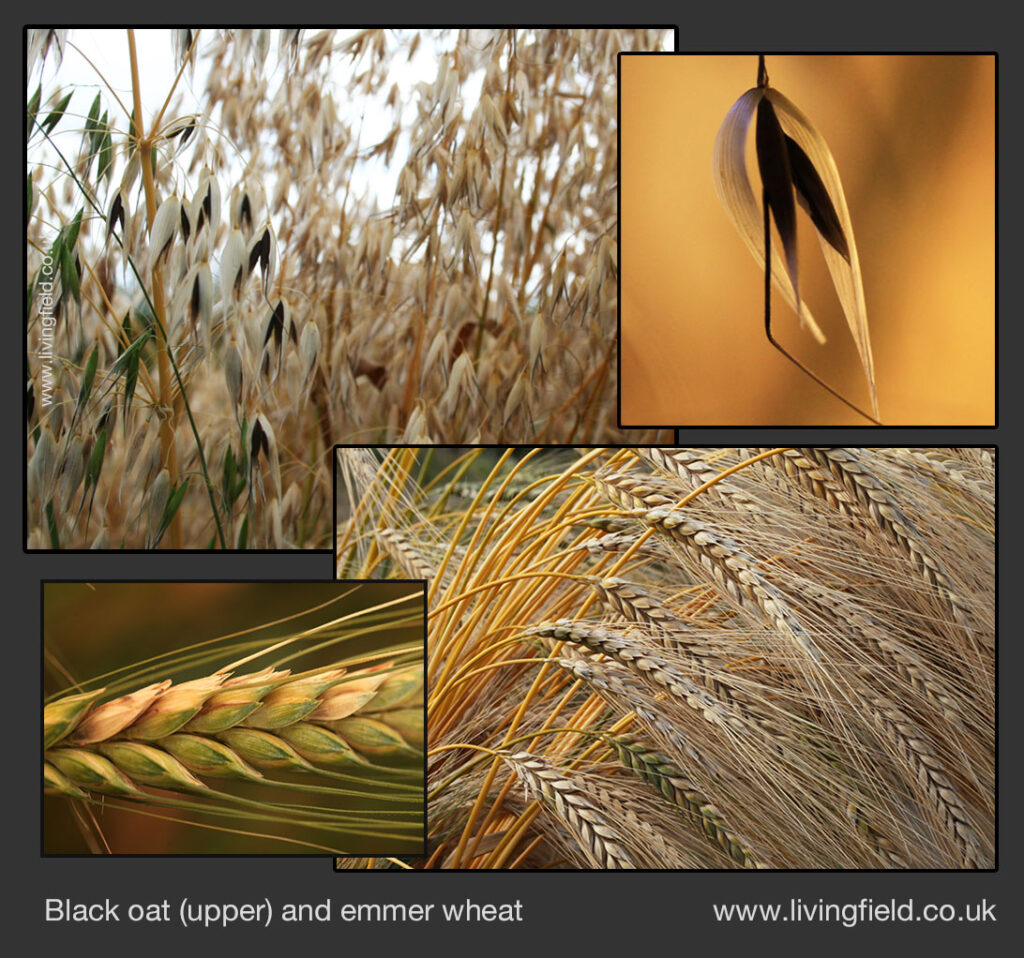[Draft – subject to editing]
The Event: import of crop plants to Britain 5000-6000 years ago and the beginnings of settled society.
The domestication of plants – though fairly recent in human history – set in train a series of trends including a rise in human population, extraction of the earth’s resources, and the growth of villages, towns and cities. Those who first turned wild plants into crops have been called ‘the greatest inventors’ but they could not have foreseen the consequences.

What happened?
Migrants from Europe brought crops and livestock to these islands in the neolithic period 5000-6000 years ago. The most important crops were grains and fibres.
Where were the crops from?
They were first domesticated from wild plants in Mesopotamia, east of the Mediterranean Sea, around 10,000 years ago. People from those regions migrated and brought their crops and animals with them across Europe.
What about other crops?
The next crops to arrive originated in the middle east, Anatolia or mainland Europe: oats and rye, cabbages and turnips. Some herbs and vegetables were brought across by Romans and Monastics. Potato from south America and rice from east Asia came much later.
Did the country benefit?
The arrival of crops changed society wherever it happened. People and livestock had most of their needed carbohydrate, protein, oil, vitamins and minerals. Agriculture, along with fishing, is still the basis of human life in Britain.
The lessons
The world was connected then as now. Materials, genes, ideas have been exchanged unceasingly since the first crops arrived. But so has aggression. Agriculture aided the growth of countries and states but led to competition for resource.
What happened next?
The harvest of grain could be stored, and eaten over the winter – people could settle in one place without having to move to find food. For a time, farming coexisted with hunting.
And before that ?
People had existed for a very long time, eating wild plants and animals. They could adapt to their environment, were social, had culture, left art. In Scotland mesolithic hunters came here as the last ice retreated.
Were any crops local?
Among plants that were local and became partly domesticated were wild herbs, wild fruit and plants with medicinal properties. There is evidence of medicinal usage thousands of years before crops appeared [4]. Many local grasses were improved for livestock.
Were there consequences?
Agriculture enabled population growth and that in turn enabled more agriculture. More wild land was converted to cropland and grassland. Forests were felled and some wildlife exterminated. Now little of the vegetation that formed after the last ice remains.
The future
Agriculture has come to dominate ecosystems, both here and in most other parts of the world. Agriculture provides for people, but it has destabilised the flows of energy and matter on which life depends. The question is how will agriculture survive.
Next
The Import of crop plants to Britain is the single most important event in the history of land and food here since the last ice retreated. The basics of food production have not changed – ground cultivated, seed sown, crops harvested, pastures tended, livestock fed. Agriculture, population growth and industry repeatedly fed off each other. Agriculture became the dominant influence on most ecosystems and has begun to degrade its own land.
And while the country could provide all the food it needs, it now relies on imports for the essential grains and vegetables. Big questions remain – will agriculture continue to self-degrade here as in many other parts of the world; is ecological regeneration possible; will the country survive if imports cease? (And many others!)
Sources / links
A vast literature is available on the origin of crops, their improvement and nutritional quality. Here are some suggestions both for general background and more specific accounts of developments in Britain.
‘They were the greatest inventors’ – in Gombrich EH. 1985/2005. A little history of the World. Yale University Press.
Domestication and origins of crops
Many articles and scientific papers are available online free of charge. A useful place to begin is The Origins of Agriculture and Crop Domestication (1998) a publication arising from a 1997 conference sponsored by several international organisations and available online through biodiversityinternational.
First settlers / first agriculture
Wickham-Jones CR. 1994. Scotland’s first settlers. Batsford / Historic Scotland.
Dickson C, Dickson J. 2000. Plants and people in ancient Scotland. Tempus Publishing.
Ashmore PJ. 1996. Neolithic and bronze age Scotland. Historic Scotland.
Medicinals and herbs
Darwin T. 1996/2008. The Scots Herbal. Mercat Press / Berlinn.
Beith M. 1995/2004. Healing threads. Polygon / Berlinn.
For further links to the history of medicinal plants, see the Living Field at Medicinals through the ages 1
